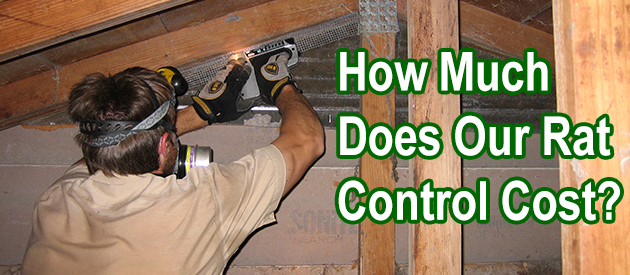Maricopa County, Phoenix Rat Control Situation:
Good evening! we have a home in downtown Phoenix that is experiencing some rat problems. Three years ago I purchased our home. It had been vacant and the attic had been infested with rats. We were successful in eradication and repairing the points of entry. However, I'm concerned about the feces that's were left behind. I rarely access the attic but it is something I would like to resolve. I have read your website and found that you offer a decontamination and or feces removal services. I am interested in learning the cost range of your services. we are able to trap and get rid of them but our bigger concern is the amount of droppings and urine that seem to be everywhere. We have blown insulation and i feel like we might need to look at a complete removal of the insulation. If that is done we are capable of putting in new insulation but feel the removal might be a little out of our scope. Can you please call me so we can discuss the issues and make a plan of action to include getting ideas and prices. we would like to get this done pretty quickly so your quick response is greatly appreciated! thank you!!
I need some advice on how to get rid of rats that are in my dog kennels. I have 10 beagles and the rats are burrowing under the kennels and the dog houses. I have tried snap traps outside of the kennels but that only catches a few. I need a way to get rid of the rats for good without harming the dogs. The dogs keep digging holes trying to get to the rats which is causing a problem and if I use poison the dogs will eat the dead rats and that would not be a good thing. I need to find a way to fix this problem for good. Please give me some kind of solution to try, I am looking for anything. Thanks
My response: That's a tough case. I'd use snap traps enclosed in plastic boxes, like Snap-E trap in the Protecta box.
Phoenix Rat Control Tip of The Week
Are rats comfortable in cold weather?
As winter arrives, the cold increases, and the consequences of this change in weather are vast. Animals like rats will look to survive during these times. The principal necessity for them to be comfortable in these temperatures include refuge and food.
People's homes are perfect for rats to shelter from the cold. They are designed to give the security and benefits needed for a warm environment. As the cold increases, the rat's muscles start tensing, lowering their immune system to the point of making them more likely to get sick.
People and rats living in the same house are a bad combination
The danger of getting diseases is caused by the accumulation of feces that promotes bacteria development all over the house.
These microorganisms produce very dangerous diseases and infections, among them, the best known for its severity is leptospirosis that is caused by ingesting food contaminated with rodents' urine and feces.
The structural damage that living with rats can cause
Damages caused by rats are attributed by the capacity of their jaws to gnaw. They gnaw on materials like wood, plastic or even cables that, despite being hard, these are not an impediment for their teeth. During colder temperatures, their metabolism needs more energy to stay warm.
Among the activities to obtain this energy are eating and gnawing. On many occasions, this can cause dangerous accidents, such as fires thanks to short circuits caused by bitten cables. Economic losses can range from a pair of shoes to the entire house.
Living together with rodents is harmful for your health and bank account. You should know that when winter arrives, the rain and cold will make them find refuge, so you have to take preventative measures as a defense weapon against this urban plague.


